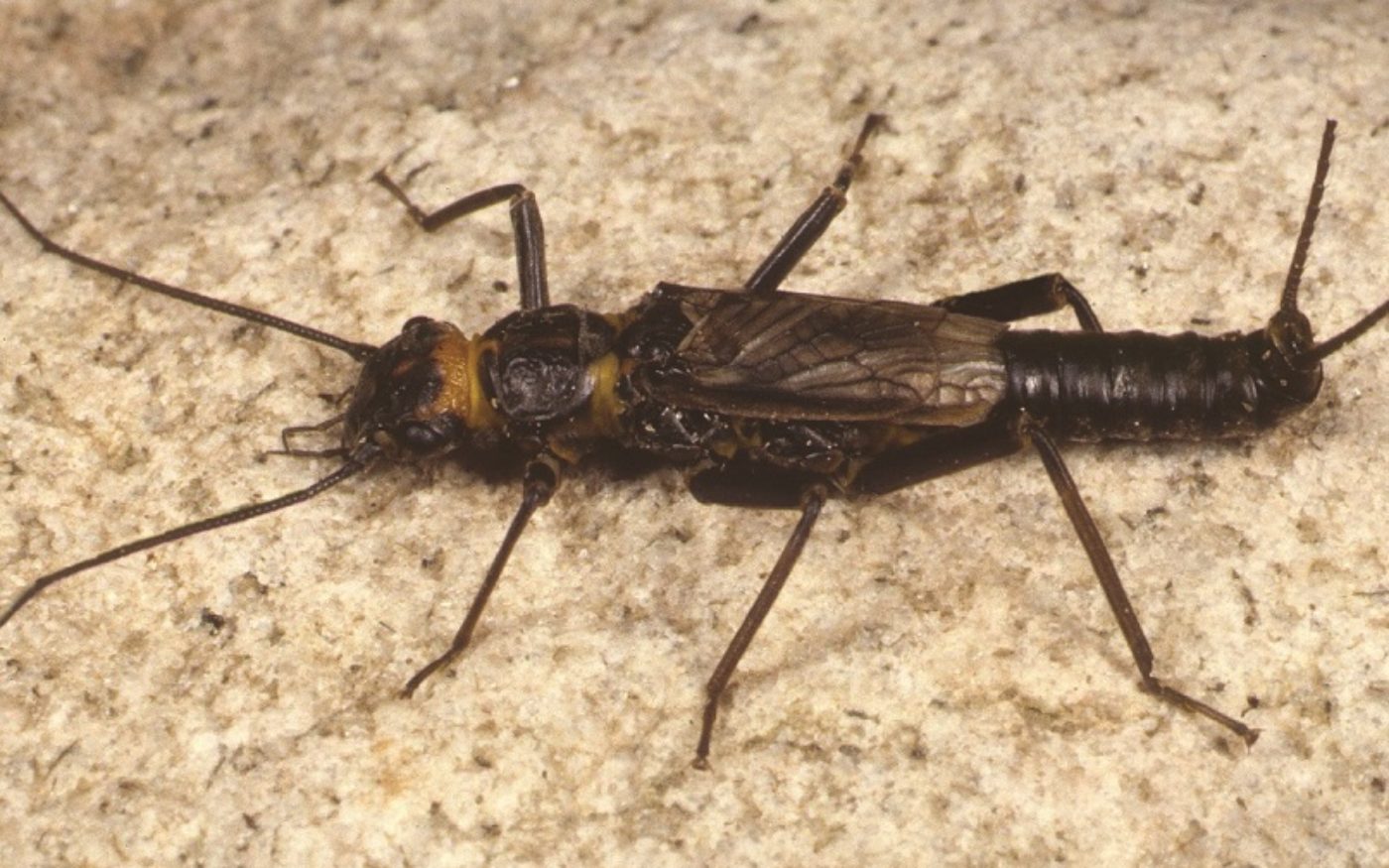Order
Stoneflies
Stoneflies are freshwater invertebrates and most species live in fast flowing upland freshwater. Nymphs require highly oxygenated and unpolluted water, their presence is therefore an indicator of good water quality. More than 30 different species of stonefly live in Britain, the Predatory Stonefly Diura bicaudata is a common upland species.
What do they look like?
Predatory Stonefly adults have dark brown bodies, with yellow-orange at the rear of their heads and infront of their wings. They have two short tails, slender legs and narrow leathery forewings over broader hindwings. At rest their wings are folded back over the body; in females the wings extend beyond the end of the body, but males have shorter wings covering up to a sixth of their body length. Nymphs of the Predatory Stonefly have flattened elongate bodies, up to 30mm in length with two long tails.
Where do they live?
Common Predatory Stonefly nymphs live in cool and fast running water, with high oxygen and low pollution levels, usually in small upland streams or stony lake shores in Britain. Adults stay close to the water from which they emerged, clinging to nearby rocks and vegetation.
Where can they be found?
The Common Predatory Stonefly is widespread in upland West and North West areas of Britain, in freshwater at high altitude.
When can you see them?
Adult Predatory Stoneflies are present near water between April to June, nymphs are present in water all year round.
Life cycle
Predatory Stonefly adults emerge between April and June and remain close to water. They live for two to three weeks and do not feed. When mating, males will surround a newly emerged female in a 'mating ball' and fertilised eggs then mature for several days within the female. Eggs are laid on the water surface in two or three egg masses, as soon as they touch the surface the eggs sink to the bottom of the water body. After hatching the nymphs go through ten to twenty moults, depending on environmental conditions, they remain in the water until the following spring to emerge as adults.
What do they do?
Young nymph Predatory Stoneflies are herbivorous or detritivorous, eating plant or organic matter in the water. As they grow they become omnivorous, eating black fly larvae and other slow moving invertebrates. Predators of stonefly nymphs include larger invertebrates such as dragonfly nymphs and water beetles. Stoneflies are important prey for freshwater vertebrates such as fish and birds.
Did you know?
Adult male and female stoneflies communicate by 'drumming', they strike their abdomens on the habitat substrate with a distinctive pattern of pulses and pauses.

